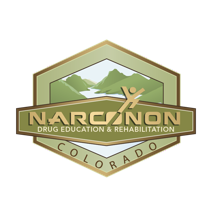Making Suboxone More Accessible Won’t Fix the Addiction Problem

Medicated-assisted treatment (MAT) has its detractors and its supporters. Often, the topics of Suboxone, Vivitrol, and other medication-assisted treatments can cause emotional responses from both sides. While one side considers MAT to be a viable solution to the opioid crisis, the other side views taking MAT drugs as just switching addictions from one opioid to another. The increase in Suboxone’s popularity has led to more and more medical practitioners providing MAT services on an out-patient basis.
In the past, heavy restrictions were put in place to control who was prescribing MAT drugs and limited how many physicians were prescribing it. Providers were required to take specialized training courses before receiving a license to prescribe Suboxone, Subutex, or Vivitrol. Recently, a news article covered changes to Suboxone policy that frankly don’t make sense. These new policies give more access to Suboxone and lighten previous limitations. It’s unclear what problem is being solved by doing so and it’s very possible these lesser-restrictive rules will cause more drug users to choose MAT over inpatient addiction treatment.
The article report that restrictions on who can prescribe opioid addiction treatment drugs, like Suboxone, have been lifted and grant easier access to these medications. The lighter restrictions may sound like a good idea at first, but in the end, it allows more drug users to take what some consider to be the “easy way out.” Currently, service providers are no longer required to refer a patient to any counseling services as part of their treatment or take any continuing education classes themselves to increase their knowledge and awareness of addiction. The issue here is providing greater access to MAT drugs may sway some people away from things like residential treatment, which is known to be more successful than MAT by itself.
It’s rare to see a person successfully kick their drug habit with only outpatient treatment and MAT instead of first completing an inpatient program. Intensive outpatient programs are an important part of the continuum of care after a person completes an inpatient program. However, they are not designed to be used in place of inpatient treatment. Loosening restrictions on MAT could potentially allow more people to gain access to replacement drugs but doing so may also deter more people from seeking residential care. Drug users may create false hope they can do it at home. DIY drug rehab isn’t a thing and hopefully, it will never be one, but this is sadly one step closer to it.
Despite the existence of MAT as a treatment option for addiction, overdose deaths continue to rage out of control. Provisional data calculated between October of 2019 and September of 2020 counted 90,000 overdose deaths, the highest death rate on record in a one-year period.
There is no miracle cure for addiction nor is addiction treatment a “one size fits all” type of thing. Overcoming addiction is no easy task. It takes hard work, dedication and lifestyle changes. The best chance a person can have for true recovery is a program that addresses the unique needs of the individuals and will give them the tools they need to for long-term sobriety.
Source:


